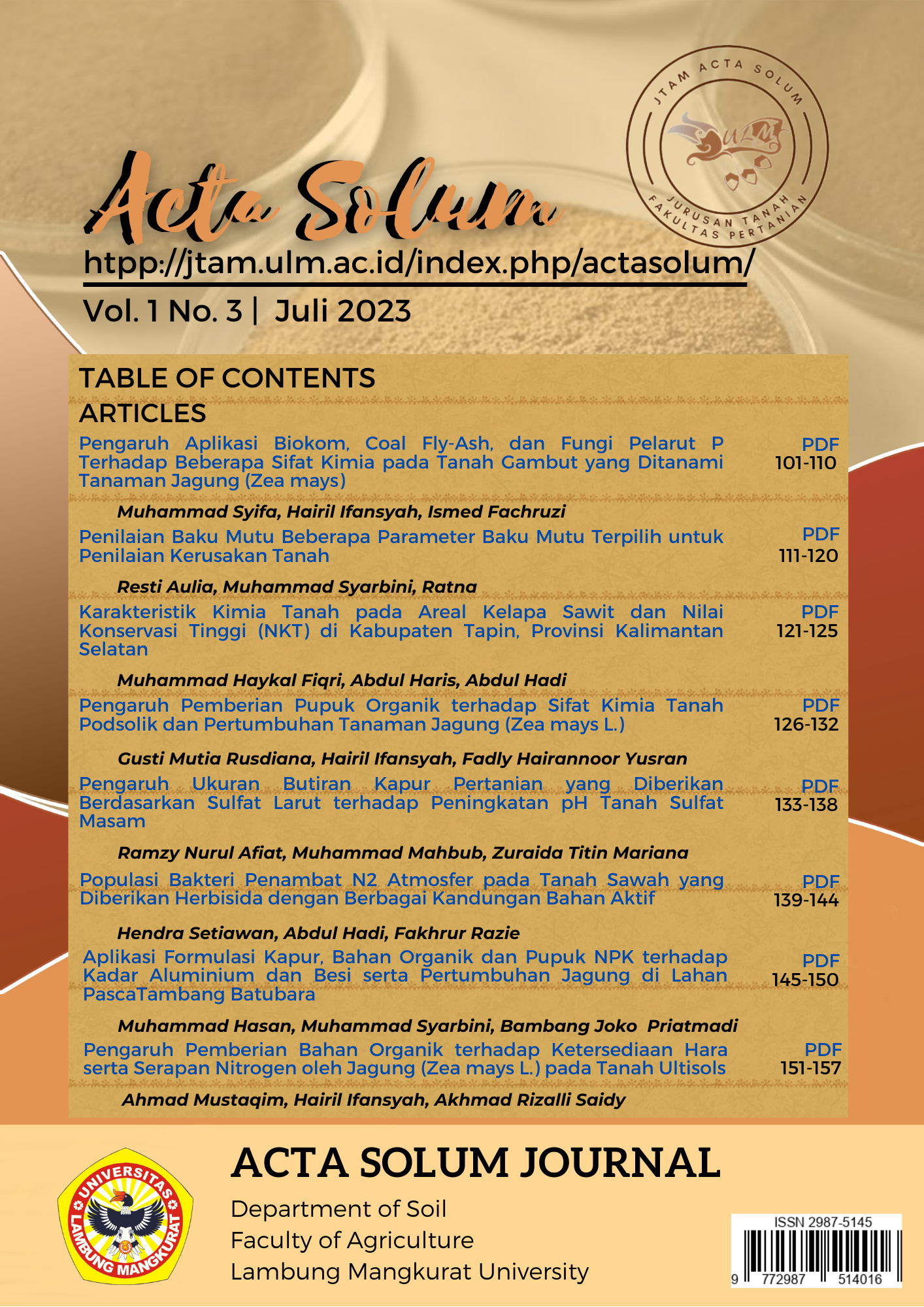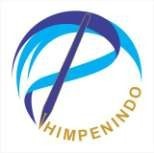Aplikasi Formulasi Kapur, Bahan Organik dan Pupuk NPK terhadap Kadar Aluminium dan Besi serta Pertumbuhan Jagung di Lahan Pasca-Tambang Batubara
Abstract
The level of solubility of aluminum and iron metals in the soil is one of the post-coal mining land problems. The high solubility of Al and Fe can be toxic to plants, so that plants are difficult to grow. This study aims to reduce the solubility of Al and Fe using formulations of liming, organic matter, and NPK fertilizer and to examine their effects on the growth and height of corn in post-coal mining land. The study used a Completely Randomized Design (CRD) with a single factor of ameliorant formulation. The treatment consisted of 10 treatments and was repeated three times, so there were 30 experimental units. The results showed that the application of ameliorant formulation of liming, organic matter, and NPK fertilizer had an effect on decreasing the solubility of Al and Fe in the soil and increasing the growth of corn in post-coal mining land. Soil that has been applied with K1 treatment (lime 3 t ha-1) can give the best results in reducing the solubility of Al and Fe metals in the soil. Application K2 treatment (giving organic matter 10 t ha-1), gave the best results for increasing the growth of corn in post-coal mining land. The best treatment for reducing Al and Fe soluble and increasing plant height growth was found in the treatment of lime 3 t ha-1 + organic matter 10 t ha-1 + NPK fertilizer 50 kg t ha-1, which was 0.42 (me 100g soil-1), 4.48 (ppm) and 108 (cm). The conclusion of this research is that the application of lime formulations, organic materials and NPK fertilizer is able to reduce levels of Al-dd, soluble Fe in the soil and increase the height growth of corn plants. Dolomite is able to reduce Al-dd and Fe-soluble levels. The application of organic and inorganic fertilizers affects the growth of corn height.
References
Erfandi, D. 2017. Pengelolaan lansekap lahan bekas tambang: pemulihan lahan dengan pemanfaatan sumberdaya lokal (in-situ). Jurnal Sumberdara Lahan 11(2), 55-56.
Fidiansyah, A., Yahya, S., Suwarto. 2021. Pengaruh pupuk anorganik dan organik terhadap pertumbuhan, produksi dan kualitas umbi serta ketahanan terhadap hama pada bawang merah. Jurnal Agronomi Indonesia 49 (1), 53-59.
Harahap, E.M., 2000. Pembuatan Asam Organik untuk Pupuk. Lokakarya Pengembangan Budidaya Kewirausahaan Melalui Bahan Ajar. Jurusan Ilmu Tanah Fakultas Pertanian Universitas Sumatera Utara, Medan.
Ismunadji, M., Partohardjono, S. 1985. Program Hasil Penelitian Pengapuran Tanah Masam untuk Peningkatan Produksi Tanaman Pangan Balittan. Puslitbangtan, Bogor. 31 pp.
Iswahyudi, Izza, A., Nisak, A. 2020 Studi penggunaan pupuk bokashi (kotoran sapi) terhadap tanaman padi, jagung & sorgum. CEMARA 17(1), 14-20.
Rengel, Z. 2000. Mineral Nutrition of Crops, Fundamental Mechanisms and Implications. Food Products Press. Binghamton, New York.
Luthaviani, A.N. 2022. Perbaikan pH tanah dengan formulasi kapur, bahan organik dan pupuk NPK serta pengaruhnya terhadap pertumbuhan dan produksi tanaman jagung di areal pasca tambang batubara. Skripsi. Fakultas Pertanian Universitas Lambung Mangkurat, Banjarbaru.
Sanchez, P.A. 1992. Sifat dan Pengelolaan Tanah Tropika. (Terjemahan Johara T. Jayadinata). Institut Teknologi Bandung, Bandung
Saswita, N., Sulistiyani, Setiani, O. 2018 Penggunaan kapur tohor (CaO) dalam penurunan kadar logam Fe dan Mmn pada limbah cair pewarnaan ulang jeans Kabupaten Magelang Tahun 2017. Jurnal Kesehatan Masyarakat 6(1), 662-669. https://doi.org/10.14710/jkm.v6i1.20204
Wahyudin, U.M 2006. Pengaruh pemberian kapur dan kompos sisa tanaman terhadap aluminium dapat ditukar dan produksi tanaman kedelai pada tanah Vertic Hapludult dari Gajrug. Banten. Bul. Agron. 34(3), 141- 147. https://doi.org/10.24831/jai.v34i3.1293

















